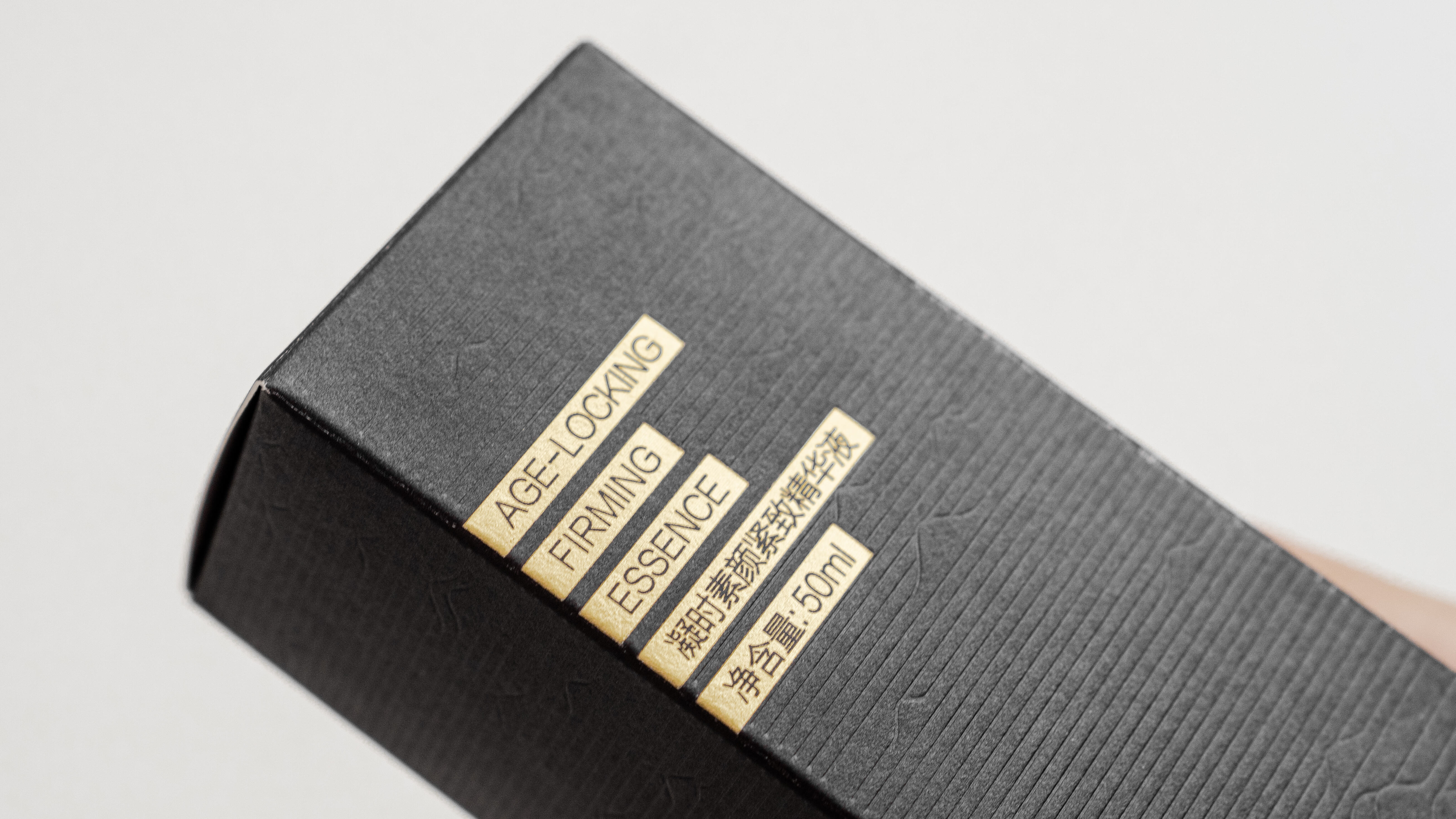
Արտադրանքի փաթեթավորման տեսողական գրավչությունը կարևոր դեր է խաղում սպառողների ուշադրությունը գրավելու և գնումների որոշումներ կայացնելու գործում: Փաթեթավորման ժամանակակից տպագրական տեխնիկաները զգալիորեն էվոլյուցիա են կրել՝ ընկերություններին աննախադեպ հնարավորություններ տրամադրելով ստեղծելու հրաշալի սալիկավոր ներկայացումներ, որոնք առանձնանում են խանութների թուղթե շարքերում: Լաւագույն ապրանքներից սկսած մինչև ամենօրյա ապրանքները, ճիշտ տպագրական տեխնիկան կարող է բարձրացնել արտադրանքի ընկալվող արժեքը և ամրապնդել ընկերության անվան ճանաչումը:
Այսօրվա փաթեթավորման արդյունաբերությունը օգտագործում է բարդ տպագրական տեխնոլոգիաներ, որոնք համատեղում են էսթետիկ գրավչությունը ֆունկցիոնալ տևողականության հետ: Այս նորարարությունները թույլ են տալիս ընկերություններին հասնել արտասովոր գունային ճշգրտության, հատուկ էֆեկտների և վերջնամշակման, որոնք մի քանի տարի առաջ հնարավոր չէին: Տարբեր տպագրական տեխնիկաների և դրանց կիրառման ոլորտների հասկանալը կօգնի ընկերություններին իրենց փաթեթավորման ռազմավարության վերաբերյալ տեղյակ որոշումներ կայացնել:
Օֆսեթային տպագրությունը մնում է համարվում փաթաթման համար ամենատարածված տպագրական տեխնիկաներից մեկը, հատկապես բարձր ծավալով սալիկավոր արտադրանքների դեպքում: Այս մեթոդը նախ մետաղական սալիկից արտապատկերում է ներկը ռետինե շինջի վրա, ապա այն տեղափոխվում է փաթաթման մակերևույթին՝ համաշխարհային տպագրության ընթացքում ապահովելով հաստատուն որակ: Տեխնիկան հիանալի է մանրամասն պատկերների վերարտադրման և ճշգրիտ գունային համապատասխանության համար, ինչը դարձնում է այն իդեալական ընտրություն ապրանքանիշի համար կարևոր փաթաթման հավաքածուների համար:
Օֆսեթային տպագրության բազմակողմանիությունը թույլ է տալիս օգտագործել հատուկ ներկեր և ծածկույթներ՝ հնարավոր դարձնելով մետաղական եզրափակումներ և պաշտպանիչ լաքեր ստանալ: Սալիկավոր փաթաթման համար այս տեխնիկան ապահովում է արտակարգ տպագրական ճշգրտություն և գունային կենսավորություն, որը կարևոր է սպառողների ուշադրությունը գրավելու համար առևտրային միջավայրում:
Թվային տպագրությունը հեղափոխել է փաթեթավորման արդյունաբերությունը՝ առաջարկելով աննախադեպ ճկունություն և հարմարեցման տարբերակներ: Այս մեթոդը վերացնում է տպագրական սալիկների կարիքը՝ թույլ տալով արժեքով արդյունավետ կարճ տպաքանակներ և փոփոխական տվյալների տպագրություն: Այժմ ապրանքանիշերը կարող են ստեղծել անհատականացված փաթեթավորումներ կամ փորձարկել տարբեր դիզայններ՝ առանց զգալի սկզբնական ծախսերի:
Առաջադեմ թվային տպիչները այժմ կարող են համապատասխանել ավանդական մեթոդների որակին՝ միաժամանակ առաջարկելով լրացուցիչ առավելություններ, ինչպիսիք են արագ կատարման ժամանակահանդեսը և թափոնների նվազեցումը: Սա թվային տպագրությունը դարձնում է հատկապես գրավիչ սեզոնային գովազդների, սահմանափակ թողարկումների և շուկայի փորձարկման դեպքերում:
Տաքստիլ փորձառությունների ստեղծումը խորդվածքավորման և խորացված նախշերի միջոցով թղթե տուփերի համար ավելացնում է caորանգ չափում, որը ներգրավում է սպառողներին շոշափելիությամբ՝ զգալիորեն բարձրացնելով բրենդի ընկալումը: Երբ այս տեխնիկաները համակցվում են փաթեթավորման այլ տպագրական մեթոդների հետ, դրանք կարող են ստեղծել ակնառու տեսողական և շոշափելի հակադրություններ:
Ժամանակակից խորդվածքավորման տեխնոլոգիաները թույլ են տալիս ստեղծել բարդ նախշեր և խորության բազմակի մակարդակներ, ինչը հնարավորություն է տալիս բրենդերին ստեղծել հարուստ դիզայններ, որոնք փոխանցում են հարուստություն և որակ: Այս մեթոդը հատկապես արդյունավետ է պրեմիալ ապրանքների համար, որտեղ փաթեթավորումը կարևոր դեր է խաղում արժեքի ընկալման մեջ:
Թղթապատումների վրա ֆոյլային կնիքը տալիս է մետաղական փայլ, ստեղծելով տեսողական ազդեցություն, որը գրավում է ուշադրությունը: Այս տեխնիկան կարող է օգտագործվել տարբեր գույներով և եզրափակումներով՝ սկսած նրբագեղ ակցենտներից մինչև համարձակ հայտարարություններ: Երբ համադրվում է ռելիեֆային կնիքի հետ՝ ֆոյլային կնիքը կարող է ստեղծել տարածական էֆեկտներ, որոնք բարձրացնում են փաթեթավորման ներկայացման մակարդակը:
Ժամանակակից ֆոյլային կիրառման մեթոդների բազմազանությունը թույլ է տալիս ճշգրիտ մանրամասներ և մեծ տարածքների ծածկույթ, ինչը նախագծողներին ընձեռում է լայն ստեղծագործական հնարավորություններ: Տեխնիկան զարգացել է՝ ներառելով հոլոգրաֆիկ էֆեկտներ և անվտանգության հատկություններ, որոնք ավելացնում են ինչպես տեսողական գրավչություն, այնպես էլ գործառույթային առավելություններ:
Միջավայրի նկատմամբ պատասխանատվությունը նպաստել է փաթեթավորման համար կայուն տպագրական տեխնիկաների զգալի նորարարությունների։ Ջրի և սոյայի հիմքով ներկերը առաջարկում են գերազանց գունային որակ՝ նվազեցնելով միջավայրի վրա ունեցած ազդեցությունը։ Այս այլընտրանքները պահպանում են բարձր տպագրական չափանիշները՝ համապատասխանելով աճող խիստ միջավայրական նորմերին:
Ժամանակակից ներկերի բաղադրությունները հիմա առաջարկում են բարելավված կպման և տևողականության հատկություններ վերամշակված սալիկների վրա, ապահովելով, որ կայուն փաթեթավորումը չհարվածի որակին կամ տեսքին: Այս մշակումները թույլ են տալիս ապրանքանիշերին պահպանել իրենց միջավայրային պարտավորումները՝ առանց զիջելու վիզուալ գրավչության հարցում:
Ժամանակակից տպագրական սարքավորումներում ներդրվել են էներգախնայող տեխնոլոգիաներ, որոնք նվազեցնում են էներգիայի սպառումը՝ պահպանելով ելքային որակը: LED-UV ցանկային համակարգերը, օրինակ, ապահովում են ակնթարթային չորացում՝ օգտագործելով ավելի քիչ էներգիա, քան ավանդական մեթոդները: Այս նորարարությունները նպաստում են ինչպես միջավայրային կայունությանը, այնպես էլ գործողությունների արդյունավետությանը:
Ավտոմատացված համակարգերի և ինտելեկտուալ տեխնոլոգիաների ինտեգրումը հետագա օպտիմալացրել է տպագրական գործընթացը՝ կրճատելով թափոնները և բարելավելով ռեսուրսների օգտագործումը։ Տպագրության տեխնոլոգիաների այս զարգացումը ցույց է տալիս, թե ինչպես կարող են համատեղ աշխատել կայունությունն ու արդյունավետությունը:
Տարբեր տպագրական շարքերում և հիմքերում գույնի հաստատությունը պահպանելը կարևոր է բրենդի ամբողջականության համար: Գամմային կառավարման առաջադեմ համակարգերը ապահովում են ճշգրիտ գունային վերարտադրություն՝ օգտագործելով բարդ կալիբրացման և հսկման գործիքներ: Այս ճշգրտությունը կարևոր է տարբեր փաթեթավորման կիրառություններում բրենդի անվանաբանության և որակի ստանդարտների պահպանման համար:
Ժամանակակից տպագրական սարքերը օգտագործում են սպեկտրոֆոտոմետրեր և այլ գույնը չափող սարքեր՝ արտադրության ընթացքում խիստ գունային հանူներ պահպանելու համար: Այս մանրամասնությունների նկատմամբ ուշադրությունը ապահովում է, որ տարբեր արտադրանքների և շուկաների համար համար փաթեթավորումը միաստիճան ներկայացնի բրենդը:
Մասնագիտացված պատվաստումների կիրառումը կարող է բարելավել թղթե փաթաթման արտաքին տեսքն ու գործառույթը: UV պատվաստումները, soft-touch վերջավորությունները և պաշտպանիչ լաքերը ոչ միայն բարելավում են դիտարկման գեղեցկությունը, այլև ապահովում են անհրաժեշտ պաշտպանություն ձեռքով մշակման և շրջակա միջավայրի գործոններից: Այս մակերեսային մշակումները կարող են զգալիորեն ազդել վերջնական արտադրանքի ընկալվող արժեքի և պիտանիության ժամկետի վրա:
Լրակազմի տեխնոլոգիայում վերջերս տեղի ունեցած նորարարությունները ներկայացրել են հակամիկրոբային հատկություններ և բարելավված կայունության հատկանիշներ, որոնք հաշվի են առնում ինչպես անվտանգության հարցերը, այնպես էլ շրջակա միջավայրի դիմաց ունեցած դիրքորոշումը: Այս մշակումները ցույց են տալիս արդյունաբերության կարողությունը հարմարվելու փոխվող շուկայական պահանջներին՝ պահպանելով բարձր որակի ստանդարտներ:
Թվային տպագրությունը սովորաբար առաջարկում է փոքր խմբաքանակով համար ամենաշահավետ լուծումը: Նվազագույն սարքավորման ծախսերով և պահանջին համապատասխան տպելու հնարավորությամբ՝ այն վերացնում է մեծ նվազագույն պատվերների կարիքը և նվազեցնում է թափոնների քանակը: Սա դարձնում է այն իդեալական սկսնակ ձեռնարկությունների, սեզոնային ապրանքների կամ շուկայի փորձարկման համար:
Ժամանակակից կայուն տպագրական տեխնիկաները պահպանում են ավանդական մեթոդների նման բարձր որակի ստանդարտները՝ նվազեցնելով շրջակա միջավայրի վրա ունեցած ազդեցությունը: Շրջակա միջավայրի համար անվտանգ ներկերն ու գործընթացները զարգացել են՝ ապահովելով գերազանց գույների կենսաթոշակություն, տևականություն և վերջնամշակման տարբերակներ, որոնք համոզված են, որ կայուն տարբերակներ ընտրելը չի վտանգում համարկիրների տեսքն ու կատարողականը:
Օֆսեթ լիտոգրաֆիան, որպես կանոն, ապահովում է գունային ճշգրտության և համապատասխանության ամենաբարձր մակարդակը, հատկապես մեծ տպաքանակների դեպքում: Ժամանակակից գունային կառավարման համակարգերի և որակի վերահսկման գործընթացների հետ համատեղվելով՝ այն ապահովում է ճշգրիտ գունային համապատասխանեցում և ապրանքանիշի համապատասխանություն բազմաթիվ արտադրական փուլերում:
Ընթացիկ միտումներից են ինտելեկտուալ փաթեթավորման հատկությունների ինտեգրումը, կայունության բարելավված տարբերակները և թվային տպագրության կարողությունների բարելավումը: Լայնորեն օգտագործվում են նաև ծածկույթների նորարարություններ, ինչպիսիք են հակամիկրոբայական մշակումները և կենսաքայքայվող վերջավորությունները: Բացի այդ, արդյունաբերությունը տեսնում է ավտոմատացման և արհեստական ինտելեկտով վարվող որակի վերահսկման համակարգերի ավելի մեծ ընդունում: